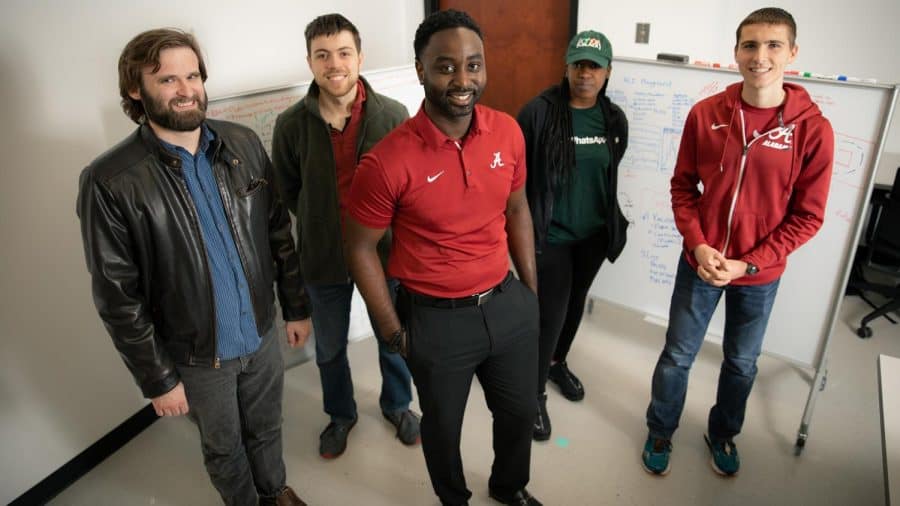UA research team studies human-computer interaction
January 28, 2019
Students working in the UA Human Technology Interaction Lab are reimagining the definition of computer science and the uses of computers when working in connection with the human brain.
With an approximate $276,000 grant from the National Science Foundation, Chris Crawford, assistant professor of computer science at the University, leads a research team that is working to develop technology that would allow children to see and interact with visualizations of their brain activity to learn how to better control stress levels and improve focus.
The team has developed an online platform where elementary-age students wear a headset that captures electrical activity from the brain, and it can witness their brain activity change as they become more focused. An image will move up or down depending on how focused or relaxed they are, and users can perform tasks to increase their focus, causing the image to move up.
Pierce Stegman, a senior majoring in computer science and a member of the research team, said the ultimate goal of the program is to make it accessible to everyone.
“We don’t want people to have to download a bunch of weird software,” Stegman said. “We just want them to be able to go to this website and immediately be able to start playing with their brain waves.”
Working with students in the Alabama Black Belt has allowed the team to study how people understand and use brain-interface technology, leading to further research and innovation in the field of physiological computing.
Crawford said in addition to understanding how to design physiological computer technologies for a younger age group, the grant received is important, as he hopes it will lead to the creation of technology that would allow users to develop their own custom applications.
“I think long-term, I see people actually creating custom technologies for themselves,” Crawford said. “I think in the past we’ve tried to use technology to solve a problem in a way we think people will like, and I think that’s a backwards way of doing it. I think we should design the technology so that people can design their own custom solutions in whatever way they choose.”
Students on the research team also have the opportunity to develop their own ideas and create innovative uses for the technology.
Amanda Holloman, a doctoral student studying computer science with a concentration in human-computer interaction and brain-computer interfaces, is a member of the student research team. Holloman is investigating the physical manifestations of stress and anxiety to better understand psychogenic seizures, anxiety, panic attacks and hysterical outbursts. She aims to find a way to intervene or lessen the impact of these manifestations and teach people to self-regulate through the use of technology.
“None of our work is really traditional computer science or work that has really been done before,” Holloman said. “Dr. Crawford started the foundation for a community at UA that’s not been presented before. He brought together so many different people from so many different backgrounds to make a new avenue in computer science that will eventually be something very impactful in the years to come.”
Crawford’s first work was in robotics and studying different ways to observe multiple robots at once, particularly drones. He was first introduced to brain-computer interface technology while at graduate school, and he began looking for ways to merge the technology with robotics. This led to the creation of brain-controlled drone racing where users race drones with their brains rather than controllers, which became a viral phenomenon.
The world’s first brain-controlled drone race was held at the University of Florida in 2016. The next race will be held at The University of Alabama on March 13. Students are encouraged to participate and see the technology at work.
William Egbert, an electrical engineering student and member of Crawford’s team, said the long-term goal of the research team is to make the technology available for everyone.
“It’s an interesting sort of project to bring this cunning-edge technology and make it available to anyone,” Egbert said. “Our goal is to create a way to develop this technology that’s intuitive and easy for anyone to use and open it up to the world.”








